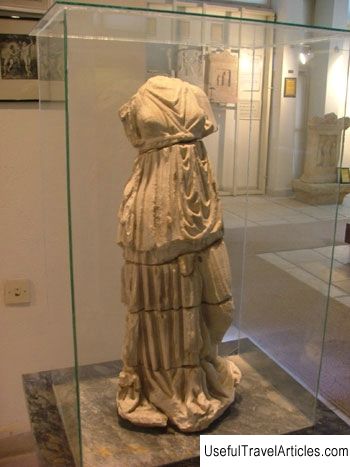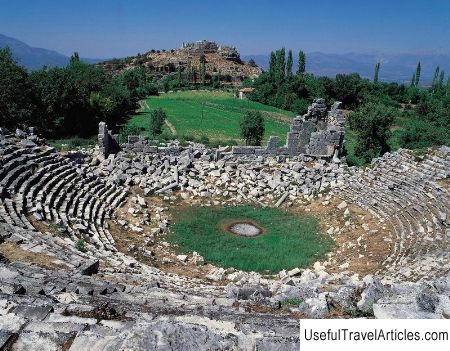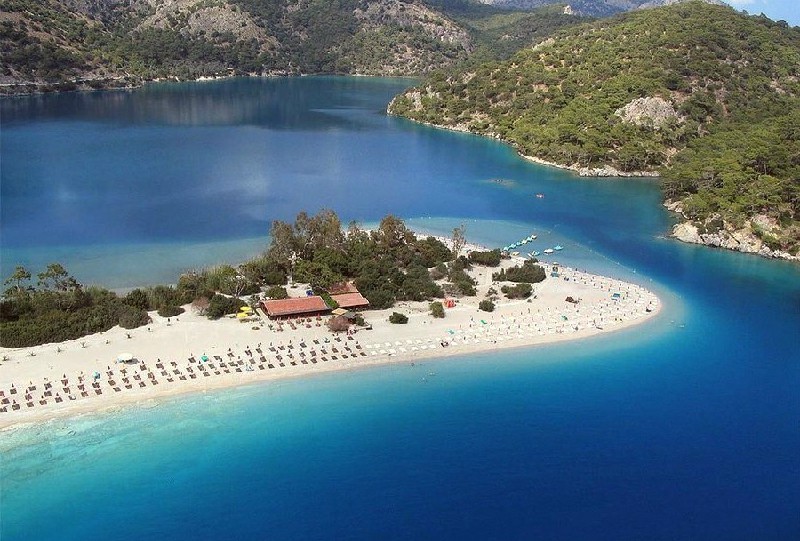The Fethiye Museum description and photos - Turkey: Fethiye
Rating: 8,1/10 (8590 votes) 
The Fethiye Museum description and photos - Turkey: Fethiye. Detailed information about the attraction. Description, photographs and a map showing the nearest significant objects. The title in English is The Fethiye Museum. Photo and descriptionOne of the landmarks of Fethiye is the City Museum, all exhibits of which were collected in the city (the old name of Telmessos, which means "city of light") and its surroundings such as Tlos and Leonton. All these cities in ancient times were part of the state of Lycia, located in the south of Asia Minor. Today it is the territory of the province of Antalya in Turkey. Judging by the archaeological finds, Tlos, the oldest city in Lycia, was founded around 2000 BC. The city is located 45 kilometers from Fethiye and was one of the six main cities of Lycia. It was once considered "the most brilliant metropolitanate of the Lycian Union" and the sports center of the Federation. Until the 19th century, the city was inhabited by the Turks. The influence of many cultures has led to a rather interesting variety of its structures: beautiful tombs, relief tombs, the "Bloodthirsty Ali" castle, which was built on the foundations of the Lycian fortress, Roman gymnasiums, city baths, an amphitheater. Fragments of these works of art are displayed in the Fethiye City Museum. Ancient Letoon, located south of Fethiye, one of the important cities of Lycia, existed in the 8th century BC. The city was built in honor of Apollo, Artemis and their mother, the goddess Leto. The ruins of three temples, original mosaics and a majestic amphitheater located in this settlement amaze with the beauty of even sophisticated travelers. Scientists claim that Fethiye was founded in the 5th century BC. The city was independent for a very long time, but in 362 BC Telmessos, as a result of the Lycian uprising against the Persians, he passed under the Corian rule, which lasted until the conquest of the city by Alexander the Great. In 43 AD. The Roman Senate proclaimed Lycia a Roman province and the ancient city was completely ruled by the Romans. In 1390 Telmessos became part of the Ottoman Empire. It was the rich history and the influence of different cultures that gave the city quite rich architecture, and the museum got an invaluable collection of exhibits. The idea of creating the City Museum appeared in the 60s of the last century, and the museum building itself was only built in 1987 ... The exhibits of the museum are priceless works of art and craft specimens from the times of the early Lycians, Greeks, Persians, Romans, Byzantines and Ottomans. History buffs will see marble busts, sarcophagi, tombstones, which were found during excavations at Leton, Xantof and nearby Lycian settlements. The exposition also features coins from different eras, ancient amphorae, fragments of ancient columns and capitals, majestic busts and monumental sculptures. Among the most striking objects of the museum, it is necessary to highlight the Stone Stele, the inscriptions of which are executed in three languages (Greek, Aramaic and Lycian). The inscriptions of the Litonian stele, dating back to 358 BC, made a huge contribution to the deciphering of the Lycian texts. Another exhibit that deserves special attention is a very beautiful sculpture "A Young Girl with a Dove". Historians believe that this work of art is associated with the cult of Artemis and in ancient times a temple was built in the city in honor of the goddess. Particular attention should be paid to the "Izraza" monument, relating to the era of the Lycians. The exposition of the museum is divided into two sections: archaeological and ethnographic. Of the entire cultural heritage of the Lycians, architectural monuments have been especially well preserved: tombstones, the bulk of which are carved in natural rocks; often they represent examples of the Greek, especially Ionian style, sometimes - imitation of the wooden structures characteristic of Lycia. All sculptures are imbued with the spirit of true Greek art. The bulk of the items of the archaeological part of the museum are ceramics (ancient sculptures, dishes, ancient vases). The ethnographic section is represented by handicrafts of those times: clothing, original embroidery, hand-woven fabrics, national costumes, ornaments characteristic only of this region, as well as an old but still operating loom. Household items presented in the collection of the museum speak volumes about the fact that the Lycians were engaged in agriculture, made wine, grew saffron, cedars, ate and plane trees. The weapons of the Lycian warriors were daggers and crooked sabers. The main decoration of this section is a 19th century wooden door with beautiful carved arabesques. The most valuable exhibits of the museum reflect the life of the inhabitants of the city from 3000 BC to the end of the Byzantine era.    We also recommend reading Seville city walls (Murallas de Sevilla) description and photos - Spain: Seville Topic: The Fethiye Museum description and photos - Turkey: Fethiye. |




